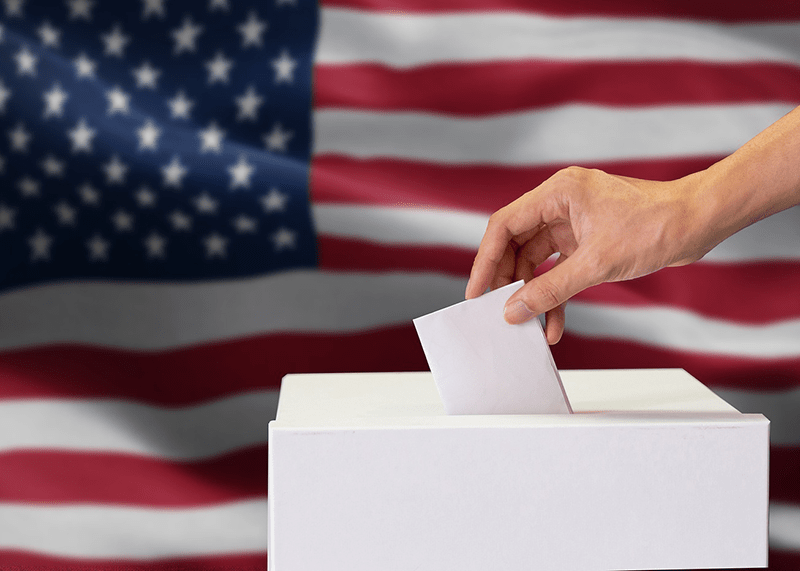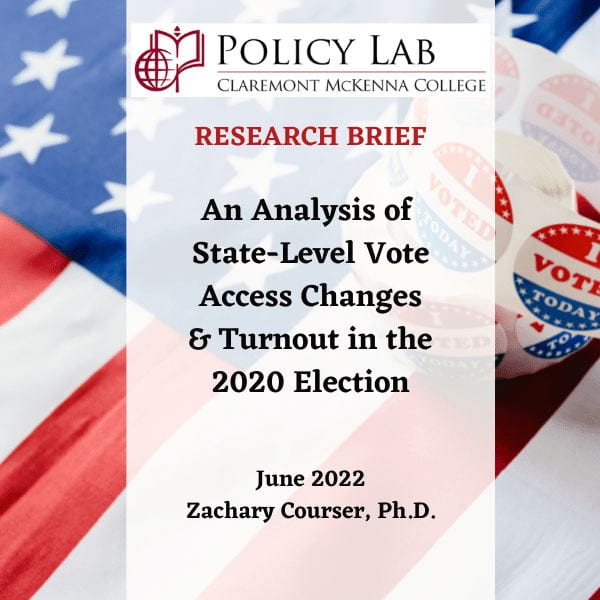

BACKGROUND
In response to the COVID-19 global pandemic every state undertook some modification of its election laws. As documented in Courser and Helland (2021), examples of those changes include universal vote by mail, in which voters automatically receive a ballot without the need to request it; making drop-off boxes available; changing registration deadlines; and making adjustments to polling places to increase safety. In the Spring of 2021, Policy Lab operationalized these adjustments into state scorecard of voting access.
Turnout in the 2020 general election was higher than 2016 in every state, when measured by voting eligible population (VEP). Last semester Policy Lab found that the relative increases in turnout across counties are correlated with higher access scores from the state scorecard. That is, states which scored higher via taking greater steps to increase access saw a larger increase in county turnout relative to 2016.
One problem with the county level analysis of the score card is that it does not identify which reforms—such as no-excuse absentee ballots or adjustments to registration deadlines—are responsible for the increase in turnout. Moreover, the county level data does not allow us to identify which groups of voters benefited from easier access (i.e., income, age, race, gender, etc.). Finally, the county level analysis does not allow us to identify whether certain partisan voters are more likely to benefit from easier access.
Policy Lab has secured the administrative voting data from 12 counties, based on their state’s access score and other attributes: Bergen County, NJ; Bonneville County, FL; Cuyahoga County, OH; Franklin County, OH; Gallatin County, MT; Harris County, TX; Hillsborough County, FL; King County, WA; Los Angeles County, CA; Maricopa County, AZ; Middlesex County, NJ; and Salt Lake County, UT. We are also hoping to obtain St. Louis County, MO. The above data covers the 2012, 2016 and 2020 elections.
RESEARCH
Using this data we plan on examining the impact of different reforms and decompose the impact of those reforms across different groups of voters. In order to prioritize which counties and vote access reforms to analyze, we will document the voting access laws for each of the 12 counties during the 2012, 2016, and 2020 elections. To identify the impact of election law changes on registration, we will estimate the number of unregistered voters in each county. This requires constructing the total voting age population (VAP) for each county using US Census data. We will also gather the available data for each county on the income, race, gender, age and partisan affiliation of individual voters to construct the number of unregistered voters.

Project Partner: Kevin Kosar, Resident Scholar, American Enterprise Institute
Faculty: Zachary Courser, Co-Director; Eric Helland, Co-Director
Staff: Liz Biskar, Assistant Director
Lab Managers: Anika Kimme and Augusta Lewis
Research Assistants: Spring 2022 Policy Lab Class

